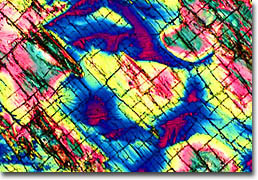|
Sports, which are usually defined as physical games or competitions that are governed by custom or established rules, have been played throughout history. Wrestling, boxing, races, and ball games were, for instance, practiced by ancient Egyptians as well as the ancient Greeks, who are well known for establishing the Olympic games, which were originally part of religious festivities. The ancient Romans also enjoyed sports, most preferring, however, to act as spectators rather than as participants in the gladiatorial contests, chariot races, and other athletic activities favored at the time. During much of the medieval period, sports, such as races and an early form of football, are believed to have been widely enjoyed informally by peasants, while archery contests, hawking, and knightly tournaments were the dominion of the aristocracy and social elite. The transition to modern sports, which are highly standardized, regulated, and subject to quantifiable results, became pronounced in the eighteenth century in England, a trend that soon spread around the world, although the introduction of national organizations to oversee sports did not begin to appear until the following century.

Football
In the United States, organized sports began to gain momentum in the nineteenth century when a championship contest between two baseball teams was organized in New York City in 1858. This is when an all-star Brooklyn team met the New York all-stars for a two out of three championship series of games. Despite the very high (at the time) 50 cents admission charge, over 1500 people showed up to watch the series. The interest in this game was an early instance of the willingness of Americans to spend money on watching sports, an idea that certainly was appealing to many capitalists. Indeed, over time, with the help of the mass media, sports have developed into an industry with tremendous profit-generating power. Sports coverage has become so prevalent that it is nearly impossible to remain ignorant of such information as which teams are pitted against one another in the Super Bowl and which basketball players receive the highest salaries. After all, the latest sports news receives an entire section to itself in most newspapers in the United States, a large number of specialized sports journals are published around the world, and there are college and professional sports competitions broadcast on television and radio on a continuous basis, some channels being solely dedicated for the purpose.

Baseball
A large part of the thrill of sport spectatorship is the identification individuals feel with certain teams or players. College students and alumni, for example, often feel strong bonds with the various sports squads belonging to their schools, especially those that are considered to be particularly strong. A similar kind of affinity is also frequently experienced by those that live in a certain locale, people often favoring professional teams associated with the area that they live in. On a grander scale, sports are heavily connected with nationalism, especially in such highly viewed events as soccer's World Cup and the Olympic games, which were revived in the late 1800s. In such international arenas, the desire for certain countries to win may be considered politically charged, since athletic triumph is often associated with prestige. The political aspect of sports is even harder to deny when one considers that both the United States and the nations of the former Soviet Union boycotted the Olympics at different times in the 1980s due to government affairs. Also, women and African-Americans were forced to fight long political battles in order to become eligible to even enter the structured world of modern sports, which were traditionally the realm of white males.
Although the politicizing of sports, monetary disputes among players, accusations of steroid abuse, and exorbitant costs of attending high-profile games can be disheartening, the more innocent joy provided by sports can still be occasionally seen among children. Indeed, it is not yet unheard of for kids to still spontaneously begin a game of kickball on a warm summer day or to enjoy a round of softball without the benefit of a cheering crowd. Tens of millions of children are, however, also involved in organized sports and are becoming so at increasingly younger ages. A few decades ago, it was rare for children to begin playing on a sports team before they entered school, but now they may formally enter gymnastic leagues before they have seen their second birthday, enroll in a soccer club at the age of three, and begin their peewee basketball careers by the time they are four. The questionable benefit of organized sports for such youngsters is a matter of significant debate. Some parents and experts claim that even very young children can learn focus, discipline, respect, and teamwork from playing in supervised sports leagues, but others suggest that in many instances, this is simply not the case. Nevertheless, as long as the current trend in enrolling tiny tots into organized sports leagues continues, many children will know how many outs are in an inning and what a field goal is before they can write their names or tie their own shoes, a powerful testament to the great extent that sports have become ingrained in American culture.
|


